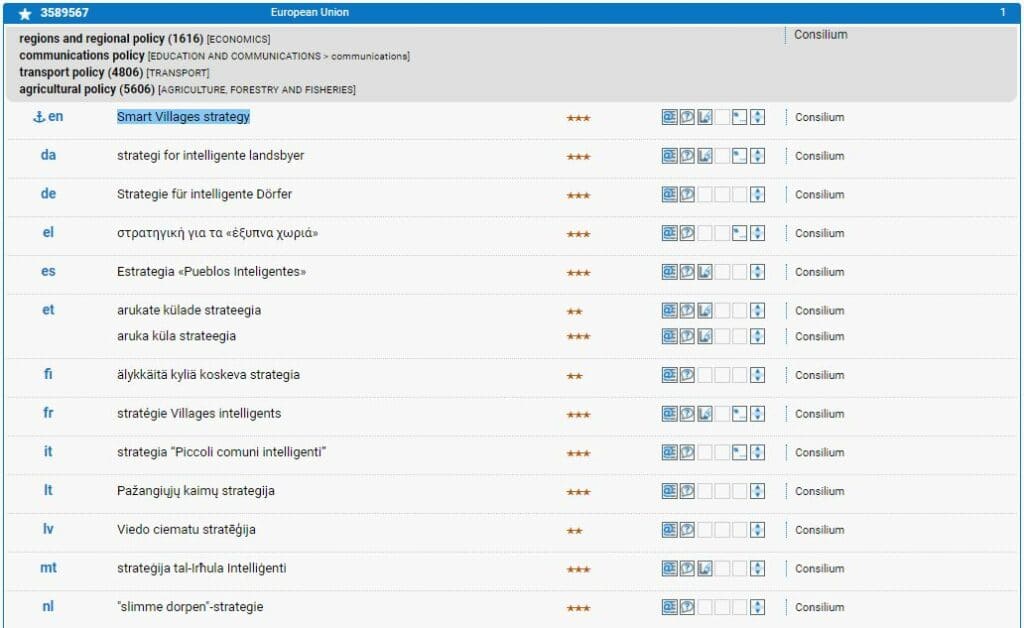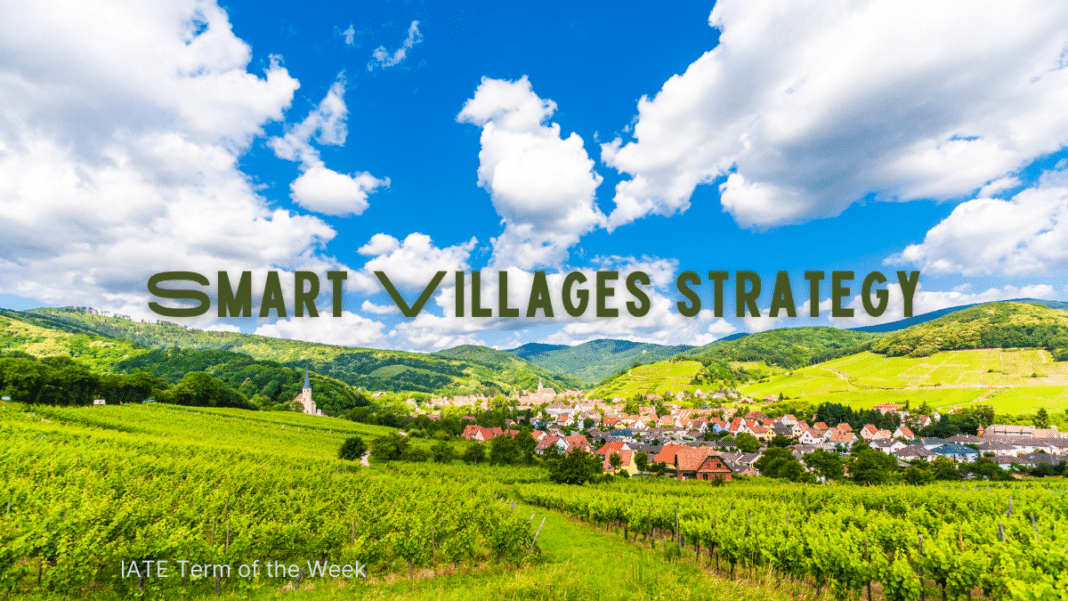This week we will talk about “Smart Villages strategy”. To begin with, there is not a fixed definition of what a “Smart Village” is. This term has been intentionally left without a legal definition to acknowledge the unfixed nature of the concept to which it refers. Therefore, our broad definition is: Smart Villages are rural communities that employ modern solutions to solve their problems, while remaining faithful to their traditions. Smart Villages strategies provide the instruments to transform rural areas.
Why are Smart Villages strategies needed?
The need for Smart Villages strategies is dictated by the problems that rural areas face in keeping up-to-pace with the swift changes of today’s world. Some of these problems are:
- depopulation
- scarcity of job opportunities
- insufficient links with cities
- scarce broadband connectivity
- inefficient management of natural resources
- poor access to healthcare facilities
- limited choice of schools and education centres
What are the goals of Smart Villages strategies?
The goals of Smart Villages strategies are many. First and foremost, they aim at empowering rural communities and helping them to prepare for future challenges. More specifically, that translates into an improvement of citizens’ quality of life in rural areas. Smart Villages strategies are designed to give rural communities the tools they need to develop and achieve long-term financial sustainability. The core idea of these strategies is for rural areas to use the innovations that could potentially threaten their existence for their own advantage.
The transformation of a rural area into a Smart Village is driven by proactive citizens who can catch opportunities for growth. Indeed, these changes in rural communities are intended to be bottom-up, namely guided by the people who make up those communities. This is important as only the people who live in those communities know what their most pressing needs are. Therefore, imposing standardised measures from the top would probably not help to solve their problems.
Not all objectives and strategies can be applied at the same time in all rural areas. Smart Villages strategies should vary according to each community’s unique needs and resources. In this type of projects, a one-size-fits-all approach would not work. Real change can be achieved only if the people of the community come together to discuss their problems and propose solutions.

How do Smart Villages strategies reshape rural areas?
Smart Villages strategies reshape rural areas by harnessing their economic and social potential. These strategies should be new and alternative to the ones used before in those areas. Above all, they should be varied and creative, such as the following ones:
- use of new and existing technologies
- digitalisation
- cooperative action
- small-scale projects that will impact the community in the long-term
- investing in research and training
- consulting experts
- generating income from an asset owned by the community
- low-carbon policies
- circular economy
- bioeconomy
- exploitation of renewable energies
- use of telecommunication technologies
- sustainable mobility
- support of citizens’ well-being
- promotion of sustainable development
It is relevant to point out that the use of new technologies does not always equal a process of digitalisation. Employing digital solutions can often respond to the need for change in rural areas, but that is not always the case.
Additionally, the cooperation with nearby villages and towns can enhance the possibilities of success of Smart Villages projects. Smart Villages strategies can be formulated by including a whole network of villages and small towns, or by focusing on one village, at first, and, then, expanding the approach to include communities with common needs.
Cooperation at the level of the village is essential, as highlighted in the previous sections. Often, Smart Villages strategies start with a group of citizens particularly eager to take action, organised in a society or a non-profit organisation.
The future of Smart Villages strategies
European Smart Villages have been discussed within the framework of the reform of the Common Agricultural Policy (CAP) in December 2020. Indeed, Smart Villages play an important role in achieving the goals set by the European Green Deal, especially when it comes to access to fast broadband and economic growth that is socially and environmentally sustainable. An important actor in the promotion of Smart Villages strategies is the European Network for Rural Development (ENRD), which aids in the organisation of networks of Smart Villages and spread of information regarding available resources.
In summary, the purpose of Smart Villages strategies is to develop rural areas in a sustainable and balanced way, while adapting to a changing world and bringing social innovation in rural communities.
References
EPRS | European Parliamentary Research Service. 2021. Smart villages Concept, issues and prospects for EU rural areas. Briefing. European Parliament. Available at: https://www.europarl.europa.eu/RegData/etudes/BRIE/2021/689349/EPRS_BRI(2021)689349_EN.pdf. [Accessed 28 May 2021].
EU Action for SMART VILLAGES | FAO. 2021. EU Action for SMART VILLAGES. [ONLINE] Available at: http://www.fao.org/family-farming/detail/en/c/883236/. [Accessed 28 May 2021].
European Commission – European Commission. 2021. Commission publishes recommendations for Common Agricultural Policy national strategic plans. Press corner. [ONLINE] Available at: https://ec.europa.eu/commission/presscorner/detail/en/ip_20_2473. [Accessed 28 May 2021].
European Network for Rural Development. 2019. How to support Smart Villages strategies which effectively empower rural communities? [ONLINE] Available at: https://enrd.ec.europa.eu/sites/default/files/enrd_publications/smart-villages_orientations_sv-strategies.pdf. [Accessed 28 May 2021].
European Parliamentary Research Service Blog. 2021. Smart villages: Concept, issues and prospects for EU rural areas [Policy Podcast]. [ONLINE] Available at: https://epthinktank.eu/2021/04/13/smart-villages-concept-issues-and-prospects-for-eu-rural-areas/. [Accessed 28 May 2021].
The European Network for Rural Development (ENRD) – European Commission. 2021. About the ENRD | The European Network for Rural Development (ENRD). [ONLINE] Available at: https://enrd.ec.europa.eu/about_en. [Accessed 28 May 2021].

This week, you can tune in to another IATE goes Audio feature: click below to listen to ‘Smart Villages Strategy’ explained in Spanish.

Written by Maria Bruno, Schuman Trainee at the Terminology Coordination Unit. She holds a master’s degree in Translation and a bachelor’s degree in Italian Language and Literature. She is trained in websites and social media management, content writing and SEO. Currently, she is studying for her Diplôme Universitaire in Terminology at the University of Savoie-Mont Blanc.

